Australia’s ibis- What’s the difference?
Have you ever seen an ibis? Perhaps you know them affectionately as ‘bin chicken’. What if I told you there are actually three species of ibis in Australia! The Australian white ibis (Threskiornis molucca AKA bin chicken), the straw-necked ibis (Threskiornis spinicollis) and the glossy ibis (Plegadis falcinellus). If you didn’t know this, you are not alone. Read on to find out more about them and how to tell them apart in the field.
Australian white ibis Threskiornis molucca
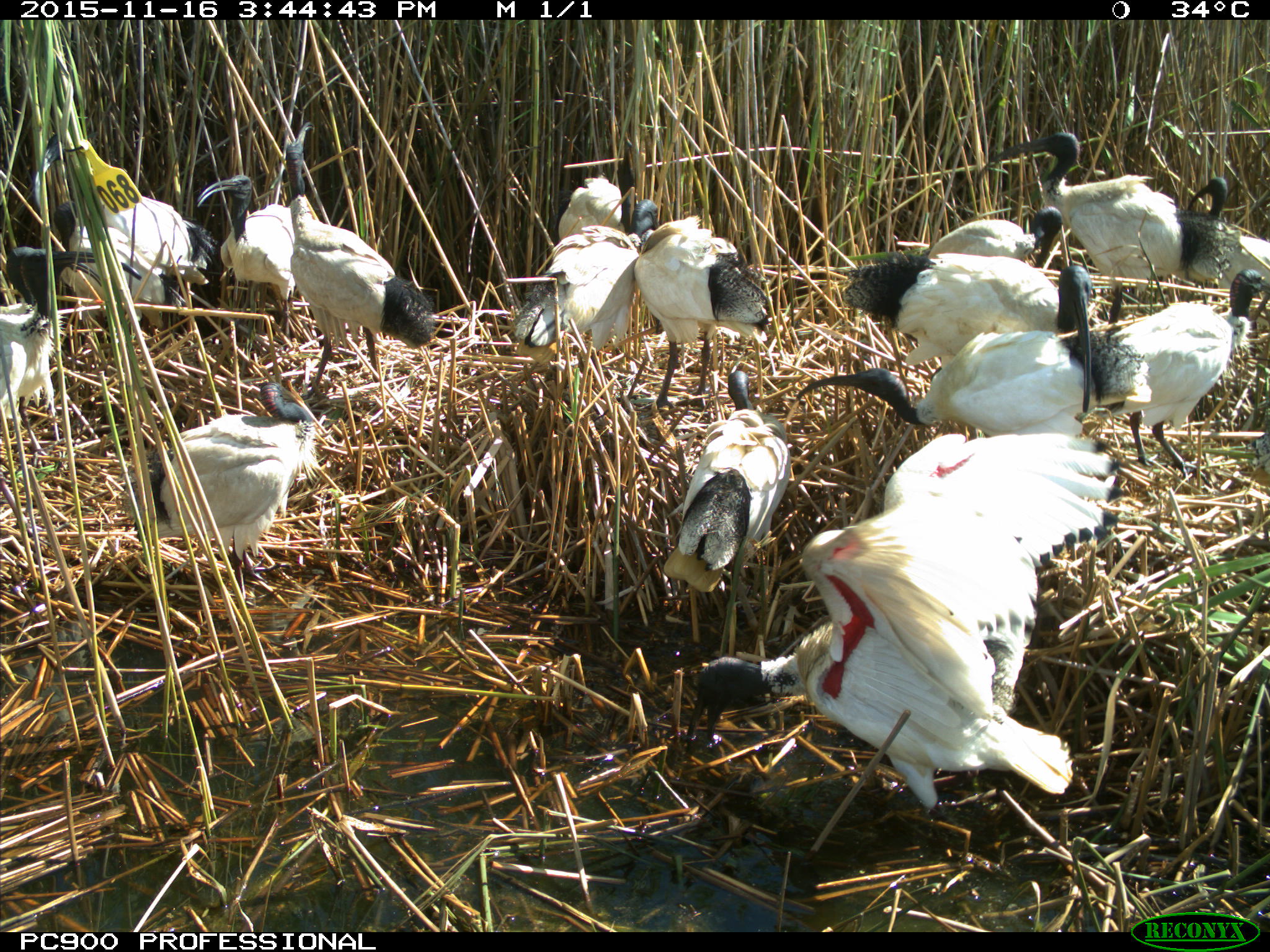
Australian white ibis have a mainly white body and wings. Image credit: CSIRO
Straw-necked ibis Threskiornis spinicollis
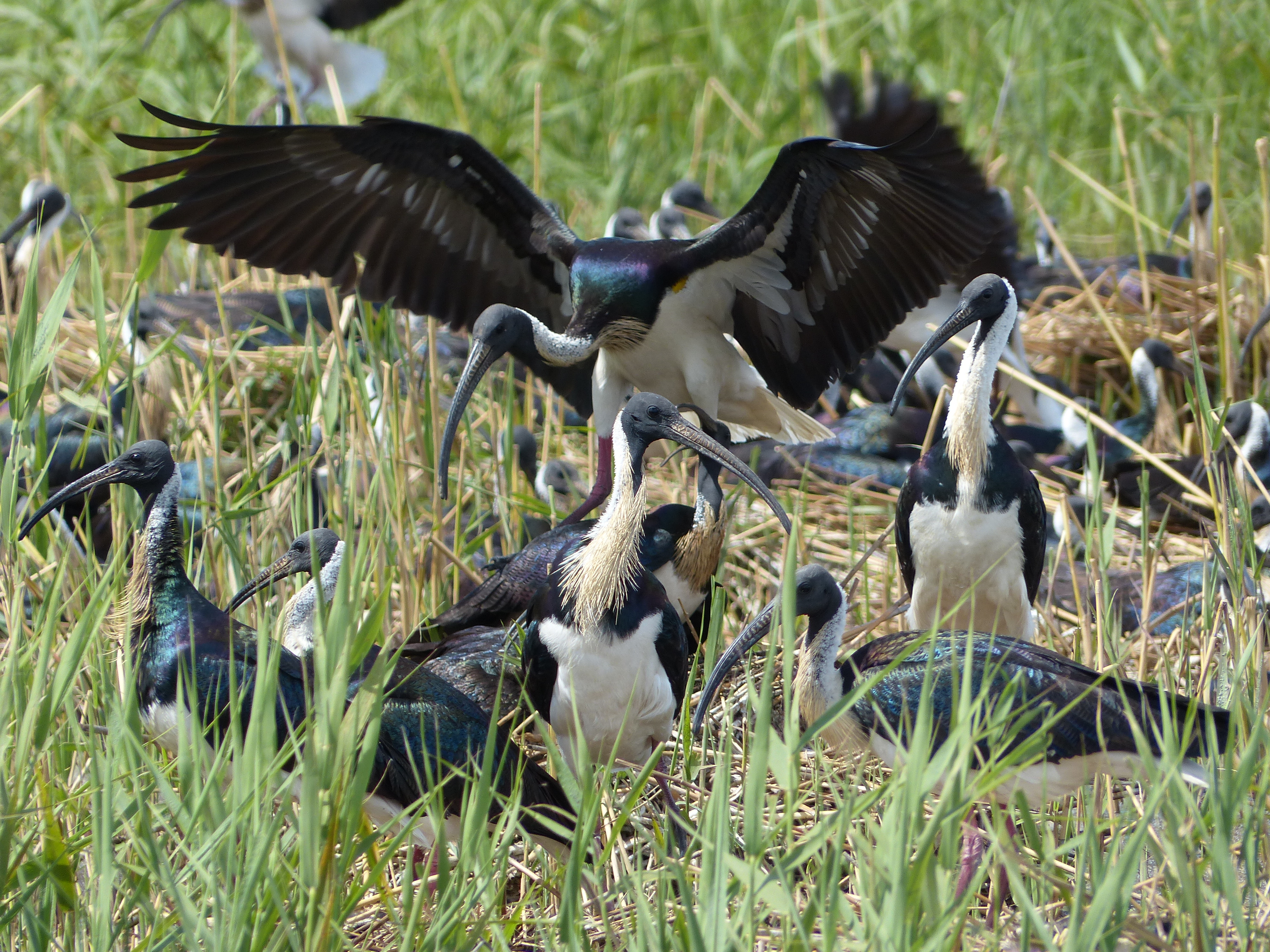
Straw-necked ibis showing off their characteristic ‘straw neck’ and rainbow-hued iridescent black feathers. Image credit: Heather McGinness
Glossy ibis Plegadis falcinellus

Glossy ibis are the smallest of the three ibis species in Australia and are distinguished by their glossy brown iridescent feathers, feathered head and pale bill. Image credit: Freya Robinson
How to tell a straw-necked from a white ibis?
As the species name suggests, the Australian white ibis and straw-necked ibis are closely related, however are very different in appearance and behaviour. However, the straw-necked ibis is often overlooked or assumed to be a dark-coloured white ibis.
Chances are you are more familiar with the Australian white ibis, whose range has become increasingly coastal and urban in recent decades. Although straw-necked ibis can be seen feeding on irrigated ovals in urban areas, their range is more concentrated to the drier pastoral lands and interior wetlands of Australia, especially inland southeast Australia. The two species do occur together, particularly within wetlands of the Murray-Darling Basin where they nest together in colonies and forage alongside on surrounding land.
From a distance, foraging straw-necked ibis are easily distinguishable from Australian white ibis by their black wings and back. Viewed closer, straw-necked ibis have distinctive straw-like feathers on their neck (their namesake). Telling the two species apart in flight can be a little more challenging, however the black wings of the straw-necked ibis usually give it away

The differing appearance of the straw-necked ibis and white ibis is clear when both species are seen together. Image credit: Freya Robinson
We’ve put together a guide with the distinguishing physical features of both species- please note that some of these features (particularly feather colour & quality) become more pronounced when the bird is breeding. The images below are of birds in breeding plumage.
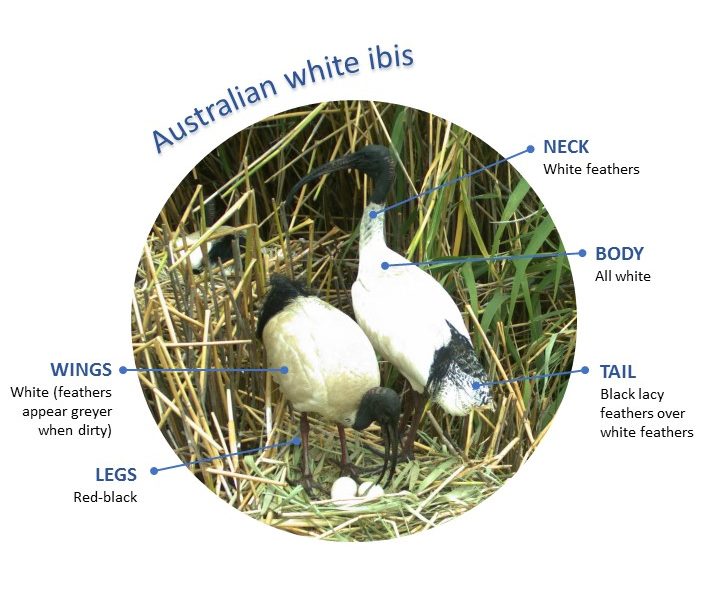
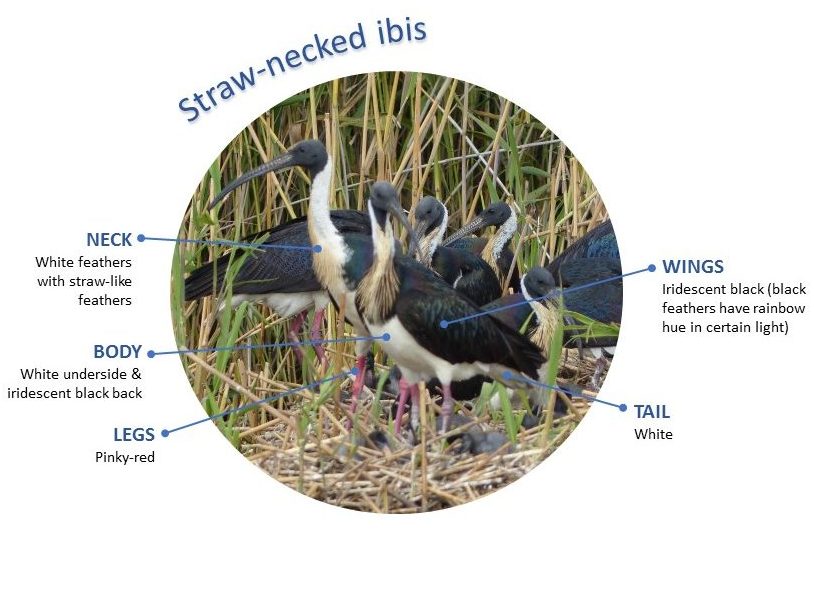
There are behavioural differences too…
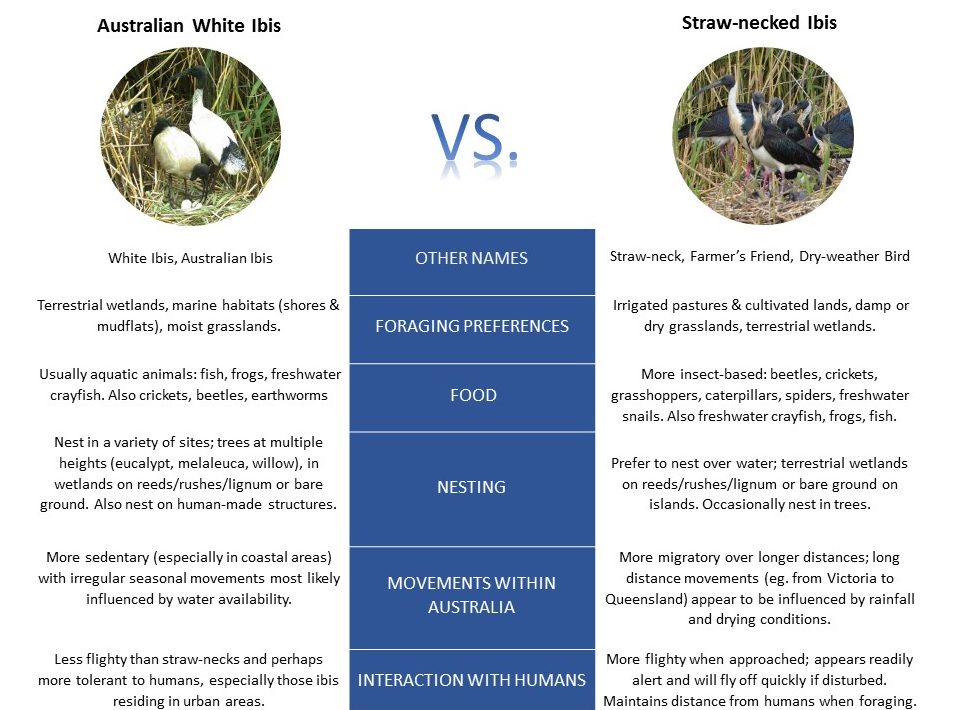
Australia’s smallest ibis- the glossy ibis
The third ibis species in Australia is the glossy ibis and differs dramatically in appearance from the straw-necked and Australian white ibis. The glossy ibis is significantly smaller and lacks the dark bill and unfeathered head characteristic of the other two Australian species. See the guide below for distinguishing features (images are of birds in breeding plumage- in non-breeding adults the head and neck feathers may appear darker brown with white streaks).
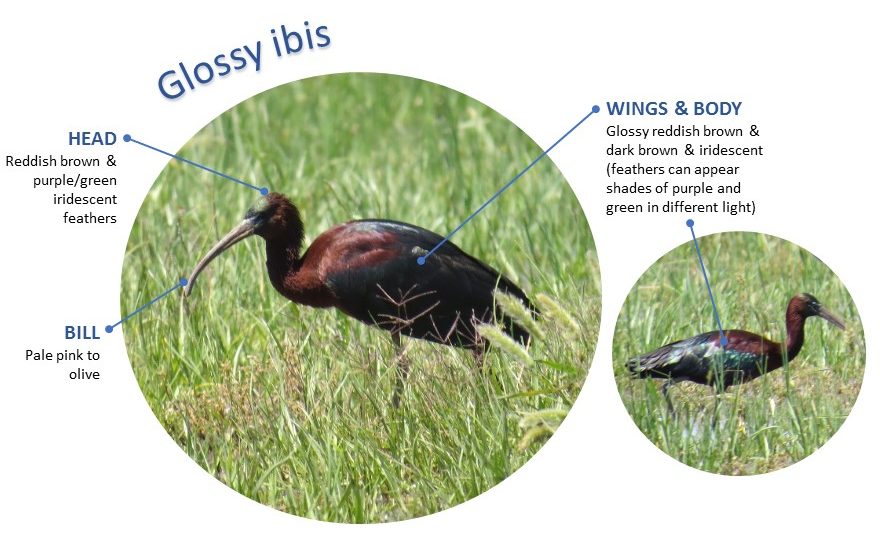
The glossy ibis has a widespread international range, with populations in south-east Asia, Indonesia, Philippines, Pakistan, India, southern Africa, southern Europe, eastern USA and the Caribbean. Glossy ibis are often found nesting alongside straw-necked and Australian white ibis within wetland breeding colonies and in trees. Their preferred food of aquatic invertebrates means they forage mostly in terrestrial environments with shallow water. The known movements of glossy ibis within Australia seem to be more nomadic and erratic than migratory, although some do move from southern Australia to northern Australia after breeding in the summer.
Source: Marchant, S. & Higgins, P.J. (co-ordinating editors) 1990. Handbook of Australian, New Zealand & Antarctic Birds. Volume 1, Ratites to ducks; Part B, Australian pelican to ducks. Melbourne, Oxford University Press.
For further information on the differences between the three ibis species check out the article and short video on the Rivers of Carbon website: What? We have three different types of ibis in Australia?
